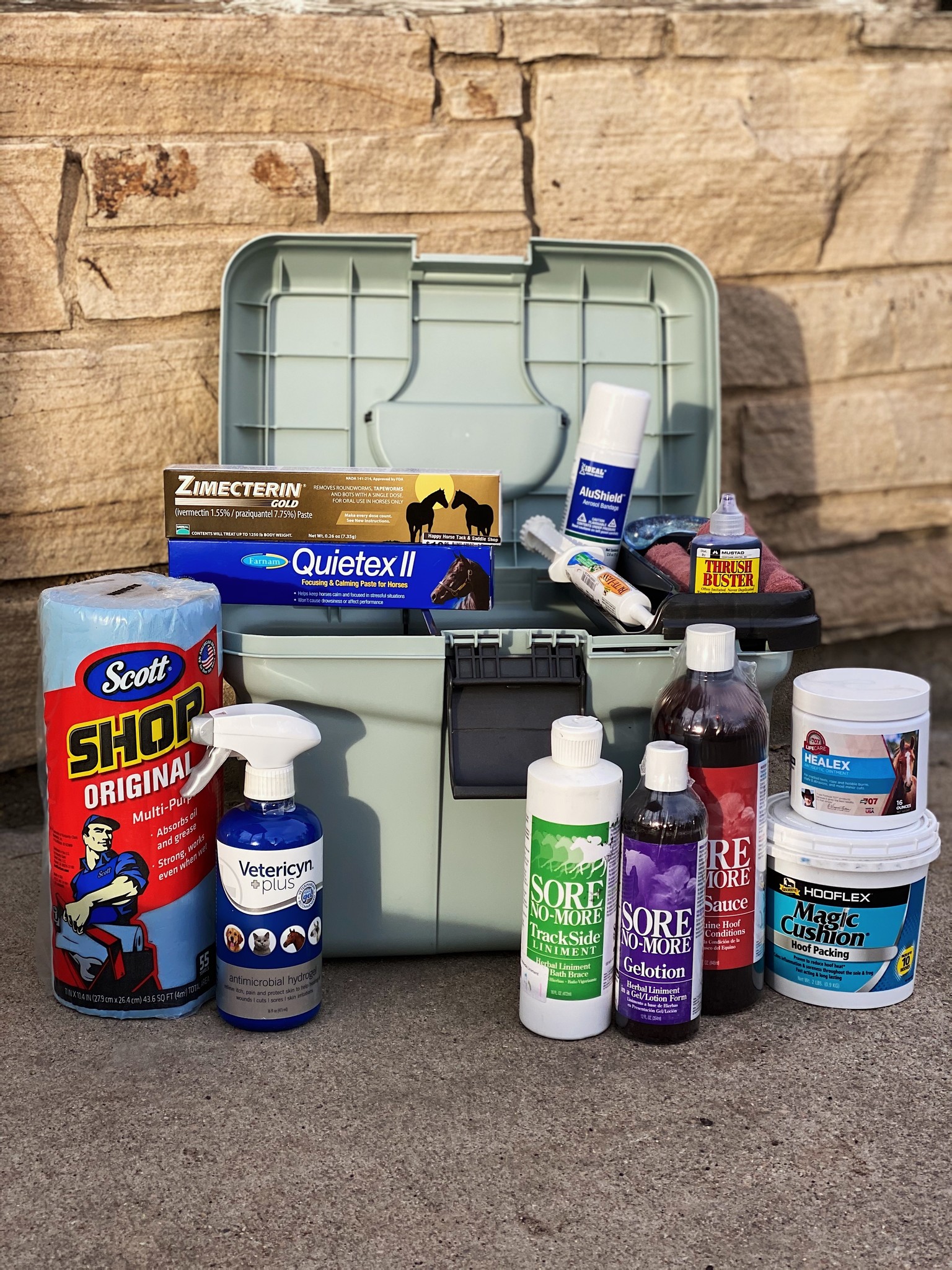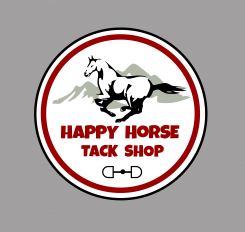First Aid Kit Essentials
- Posted on
- By Happy Horse
- 0

None of us ever want to deal with emergency situations regarding our equines, but unfortunately, we all know that with equines injuries are inevitable. Being prepared for any situation is crucial to making the situation less stressful and buying some time until a vet can get there.
Depending on whether you are making a kit for home or for travel, you may not need quite as many items, and some may be more important than others. We have listed out what we believe are 20 essential items, as well as, 12 other items we recommended keeping on hand to help you get started. You can also buy pre put together first aid kits like this one if you prefer!
Essential Items:
- First you will need a containment system. This can be as simple as a tub or bucket, or you may want something with drawers or pockets to keep everything more organized. Make sure whatever you choose keeps your items clean and dry at the minimum. Some items may need to be kept in a more temperature controlled environment.
- Thermometer - You don’t need anything fancy. A simple digital thermometer will do. Just make sure to keep one separate for horse use. Keeping extra batteries available may be valuable as well.
- Stethoscope - Once again you do not need anything fancy, but just a cheap stethoscope to help you check vitals signs can be helpful
- Flashlight or headlamp - Keep some sort of light option available in case you need to take a closer look at a wound or need to see in the dark.
- Gloves - Latex or rubber gloves are super handy for keeping yourself clean, avoiding touching wounds directly, and helping to keep things as sterile as possible.
- Scissors - Bandage scissors or just a pair of sharp scissors will be very handy to have if you need to cut bandages, hair, etc., and are just a good thing to keep around the barn in general.
- Duct Tape - As we all know duct tape can fix everything and has endless uses, so keeping some handy is always a good thing! Making a duct tape boot is an easy way to keep abscesses dry and covered.
- Towel(s) - A few dry, clean towels can have many purposes including, drying a wet or chilled horse, cleaning a wound, adding pressure to a wound or even just giving you a clean area to work off of.
- Antiseptic Scrub - Having something available to wash or scrub a wound is important. You can use an actual scrub like Betadine or something as simple as saline.
- Antibiotic Ointment/Cream - For minor cuts and scratches applying some sort of antibiotic dressing can help prevent infection and speed the healing process.
- Gauze Pads and Cling Wrap - These can be used for cleaning or scrubbing a wound, to help stop bleeding, or as a layer in wrapping.
- Cotton Roll - This is a good layering item when putting pressure on or wrapping wounds.
- Self Adhesive Bandages - Can be very helpful in covering wounds and keeping them clean. Keeping a variety of sizes on hand may be a good idea.
- Vetrap - Another item that can have many uses, including holding on bandages or wraps, tying tails out of the way, or wrapping a hoof.
- Pillow or No Bow Wrap - Always keep multiple clean wraps on hand in the event that you need to wrap legs quickly to help with swelling or to cover a wound.
- Epsom Salt - Is essential for soaking hooves to help treat abscesses.
- Bute - Do not use without approval from your vet. Bute is an anti-inflammatory used to help with musculoskeletal pain and lameness. It should not be used for long periods of time.
- Banamine - Do not use without vet approval. Banamine is an anti-inflammatory which can help alleviate smooth muscle pain, such as colic.
- Eye wash or ointment - Can be helpful for flushing out eyes and treating eye problems.
- Ice Pack - It never hurts to have an ice pack available to help with swelling.
Other handy items to have:
- Tweezers - Can be useful for pulling out splinters, ticks etc.
- Wire Cutters - Can be handy if your horse gets stuck or you need to cut anything.
- Syringes, including a variety of sizes - It never hurts to have syringes available to give medications, use for rinsing, flushing, etc.
- Pocket Knife - Another item that can come in handy if your horse gets stuck or you need to get through anything.
- Hand sanitizer - To clean up before and after care.
- Clotting agent - To help stop blood if putting pressure on the wound is not doing the trick.
- Twitch - May come in handy with horses that can be hard to handle, or if they are extremely freaked out.
- Tick Key - These are easy to use and reduce the risk of leaving the head in the horse.
- Clippers - Can be helpful if you need to remove hair to get to the wound or clean up an area.
- Electrolytes - It never hurts to have some extra electrolytes laying around, especially in extreme weather.
- Extra buckets for cleaning - In case you need to get hot water, rinse supplies, etc.
- Pen & Paper - Can be useful for recording your horses vitals, making quick notes, or giving others important information.
Other tips:
It may also be helpful to have your vet and a backup or emergency vet number written on or taped inside your kit.
Make sure to restock any items you use or that may be past their expiration date on a regular basis!
In the case of an emergency always call your vet first! A vet can talk you through basic care and let you know if they need to come out or not. Also make sure to make your safety and any other animals in the area a priority.
We hope you never have to use your first aid kit, but it is definitely something that you don’t want to be missing in an emergency. Feel free to talk to our staff about their favorite products and suggestions for stocking up and being prepared!

Comments
Be the first to comment...